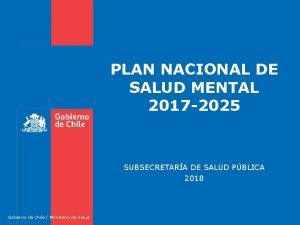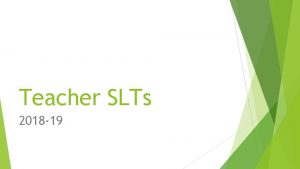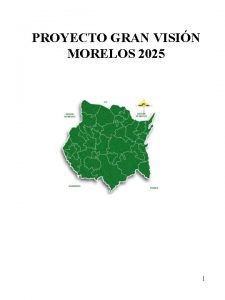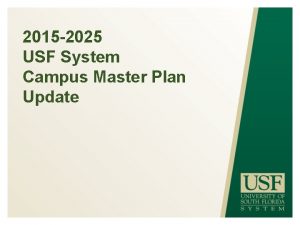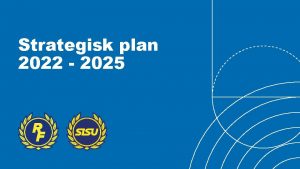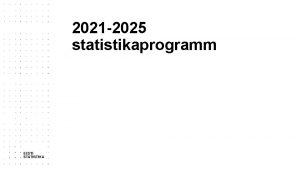Partner Huddles January 19 2017 Louisianas 2025 Plan
































- Slides: 32

Partner Huddles January 19, 2017

Louisiana’s 2025 Plan 9: 15 to 9: 45 AM

Objectives. In this session, we will: • Explain our state’s priorities for improving student learning • Describe our students’ progress to date • Prepare for the Summit day 3

Guiding Beliefs Louisiana’s students—all of them, no matter race, disability, or creed—are as smart and capable as any in America. They have gifts and talents no lesser than those given to any children on this earth. Our state has worked hard to raise expectations for students, and as a result, students are performing at higher levels than ever before. While we have made great strides in increasing life opportunities for our students, there remain serious challenges in our state’s schools. Often these challenges are experienced to the greatest extent from children of historically disadvantaged backgrounds. 4

Louisiana’s Priorities • Unify child care, Head Start, and prekindergarten to prepare every student for kindergarten. • Align standards, curriculum, assessment, and professional development that are as challenging for students and educators as any in America. • Prepare every educator under a mentor educator through a professional residency. • Create opportunity for every graduate through Jump Start, Advanced Placement, and other early college pathways to a funded education after high school. • Focus relentlessly on students in persistently struggling schools by transforming those schools and creating new options. 5

Progress to Date Louisiana students have achieved record gains in recent years. • Louisiana fourth-grade students achieved the highest growth among all states on the 2015 NAEP reading test and the second highest growth in math. • The Louisiana class of 2015 showed greater improvement on the ACT than did any senior class in states using the ACT as their state test. • Louisiana’s 2015 high school graduation rate was an all-time high of 77. 5 percent. • Louisiana’s class of 2015 Advanced Placement® results showed greater annual improvement than any state other than Massachusetts. 6

Challenges Persist In spite of great progress, data indicate that challenges to achieving prosperous adult lives persist for many Louisiana students. • Many students graduating from high school are required to repeat high school coursework when they arrive in college because they have yet to master fundamental skills. • As we raise expectations to better prepare students for life after high school, we need to ensure that student achievement for all students is increasing, and that we close pernicious achievement gaps. • Disadvantaged students experience not only these gaps, but also lower levels of access to enriching experiences that may spark lifelong interests. • Disadvantaged students are also more likely to attend schools that struggle year after year. • Underlying all of this is a need to strengthen the educator profession, making ours competitive with high-growth industries.

Louisiana’s Approach to Redesign The Every Student Succeeds Act (ESSA) provides targeted resources states must spend on schools with strong, research-based plans to improve our state’s persistently struggling schools. However, this comes with its own challenges. 1. While persistently struggling schools require outside support, there is no statewide or nationwide inventory of effective support organizations. 2. The federal mandates to transform low-achieving schools have often become a heavy-handed dictate from state agencies, yielding an oppositional dynamic between states and districts. To the end of resolving both of these tensions, the Department has convened the School Redesign Summit. This Summit will serve as a launching point for a series of discussions between the LDE, our LEAs and partners on how we can improve the circumstances of our students in our most challenged schools.

Louisiana’s Redesign Summit The goal of the School Redesign Summit is to launch the planning process to improve our state’s persistently struggling schools. Partners, such as yourselves, can play a critical role in helping districts set goals, build strong plans, and implement change. Today we have over 40 partner organizations represented ranging from those who operate charter schools to those who specialize in specific pieces of a school’s educational model. We have 56 district teams represented and across thosse

Schedule for the Summit Time Room Description 8: 00– 9: 10 343 -345 Welcome, Overview And Opening Plenary 9: 15– 10: 00 357 District Team Huddles Partner Conversations, Round 1 10: 15– 11: 55 Third Floor 11: 55– 12: 25 357 District Team Huddles 12: 25– 1: 25 Third Floor Lunch/District Team Huddle 1: 25– 3: 10 Third Floor Partner Conversations, Round 2 3: 25– 4: 00 357 District Team Huddles 10

Partner Conversation Round 1 The first partner conversation will be a series of seven 10 –minute discussions between districts and partners. During each discussion partners will share their approach to school improvement and take questions. Important notes: • If your organization has multiple schedules, you will have multiple tables designated for you within the same room. • A ‘bell’ will indicate when it is time to move to the next conversation. • Districts will be considering whether they would like to continue the conversation with your organization in the afternoon. 11

Between Round 1 and Round 2 Between the morning and the afternoon: • Each district will have 20 minutes to list at least 5 organizations with whom they would like to meet in the afternoon. • The Department will use these to build schedules over the lunch hour. • All schedules will be posted online by the end of lunch. 12

Partner Conversation 2 During these longer discussions, districts and partners will begin to brainstorm strategies for improving student achievement at one of the district’s schools. Districts should start this discussion by identifying one school on which to focus. For that school summarize: 1. Student achievement results—both progress and challenges 2. The reasons behind the student achievement results This should serve as a launching off point for the district and the partner to brainstorm how they might work together to address the challenges at this school. 13

Next Steps 1. Check your organization’s schedule and make sure you know the room to which you will be going. 2. If your organization has two schedules, you will have two tables in your designated room. Each table will have 10 individuals from 1 -3 districts. 3. An electronic version of the note-taking guide in your folders can be found in the Summit Document Library here: bit. ly/redesignsummit We will meet back in this room at 12 pm. 14

Louisiana’s Progress 12: 00 to 12: 30 PM

Louisiana’s Priorities 2011 -2015 • Unify child care, Head Start, and prekindergarten to prepare every student for kindergarten. • Align standards, curriculum, assessment, and professional development that are as challenging for students and educators as any in America. • Prepare every educator under a mentor educator through a professional residency. • Create opportunity for every graduate through Jump Start, Advanced Placement, and other early college pathways to a funded education after high school. • Focus relentlessly on students in persistently struggling schools by transforming those schools and creating new options. 16

Unifying Early Childhood Only half of children in Louisiana enter kindergarten ready. In response, the Legislature passed a law (Act 3, 2012) to unify the early childhood system across all funding sources--child care, Head Start and pre-K and support all programs to improve interactions and instruction. • Louisiana requires early childhood programs that take public funding to meet shared standards – regardless of program type – with a focus on classroom interactions and instruction. • At the same time, Louisiana has established local networks that are responsible for coordinating enrollment to make it easier for families to choose the best option for their children. Families also have access to performance profiles that summarize student learning. • To achieve this, Louisiana centralized state oversight for child care, Head Start and pre-K under the State Board, including licensing, accountability, funding, teacher preparation and professional development supports. 17

Aligning Our Academic Approach The Department has focused on aligning our state’s standards and assessments, the curricula and interim assessments used by the districts, and the professional development experienced by teachers. • The Department has focused on elevating high-quality curricula, interim assessments and professional development resources used by districts. At this point 80% of Louisiana districts are using a high quality curricula. • The Department has built trust across district and school level leaders through high quality state-led professional development and consistent, clear communication to superintendents, principals and teachers. • Louisiana partners with vendors to improve the quality of their products to meet the needs of Louisiana’s teachers and students. 18

Communicating through the System Annually, the Department provides support and communication directly to teachers, principals, and districts. These details are released each spring in Louisiana’s District Support Calendar. 19

Educator Preparation Leaders from school systems, preparation programs and the Department recognized that the shifts in demands on students and teachers and persistent teacher shortages necessitated that Louisiana re-examine its approach to teacher preparation and certification. In response, the Department supported school systems and preparation partners to pilot new approaches to teacher preparation. These pilot programs led to a series of policy changes that ensure that, by July 2018, all teacher preparation programs in Louisiana will include: • A yearlong classroom residency alongside an experienced mentor teacher • A competency-based curriculum that provides candidates with the knowledge and skills needed for their first day of teaching BESE also approved a transitional funding package that includes stipends for undergraduate residents and mentor teachers for these residents. 20

High School Opportunities Louisiana’s high school students lagged on many metrics that are important for ensuring students have access beyond K-12 education. • The Advanced Placement® Cohort Results Report for 2015 report showed Louisiana’s rate of improvement in seniors achieving a 3, 4, or 5 was second in the nation behind Massachusetts. Since 2012, the number of qualifying scores earned annually has increased 108 percent. • Jump Start is Louisiana’s innovative career and technical education (CTE) program that includes course work and pathways developed by districts, business & industry, and post-secondary partnerships. Students are required to attain industry-created, industry-valued credentials in order to graduate with a Career Diploma in our state. Every high school in Louisiana offers a Jump Start pathway to students. • Beginning with the 2017 -2018 school year, each graduating senior will be required to complete Financial Aid Planning as a condition of graduating. As of today 1 in 4 of all HS seniors have turned in their FAFSA for the current school year. Last year at this point 1 in 100 had turned in their FAFSA. 21

Improving Struggling Schools The Louisiana Department of Education has been focused relentlessly on improving our state’s most struggling schools through the Recovery School District. In New Orleans, the Recovery School District has managed the majority of the city’s schools since 2005. • In 2015, the first year using a nationally comparable grade 3 -8 ELA and math assessment, 25 percent of African American students in New Orleans scored Mastery or above, compared to 21 percent of African American students statewide and outperforming every other participating state except Massachusetts. • New Orleans high schools make up the top five highest performing schools amongst a list of 60 high poverty high schools in our state. . • The graduation rate for African-American males in New Orleans, 68 percent, far exceeds the national average of 59 percent. • New Orleans ranked 35 th of 69 school districts statewide on the ACT in 2015, nine places higher than in 2014. 22

Louisiana’s Accountability System The school and district accountability system sets the expectation for academic quality across Louisiana and supports all of our state’s initiatives. For schools with grades K-8, the accountability system values: 1. Student assessment performance 2. Improvement with our state’s lowest performing students 3. The success of these students in grade 8 in the 9 th grade at their high school For schools with grades 9 -12, the accountability system values: 1. Student assessment performance on both EOC and ACT 2. Improvement for the state’s lowest performing students 3. Cohort graduation rate 4. Credentials earned in college or the workplace Louisiana is currently improving its accountability system through its ESSA plan, to • Raise the bar for what it means to be an A school • Increase the role of progress for all students • Reward schools for student improvement on non-tested measures 23

Next Steps Between the morning and the afternoon: • Districts are ranking the organizations with whom they would most like to meet during the afternoon. • The Department will use these to build schedules over the lunch hour based on district preferences and district need. • All schedules will be posted at bit. ly/round 2 schedules by the end of lunch. We will meet back in this room at 3: 25. 24

Louisiana’s Approach to Struggling Schools 3: 25 – 4: 00 PM

Objectives. In this session, we will: • Describe ESSA requirements for each struggling school • Explain Louisiana’s approach to redesigning our struggling schools 26

Louisiana’s Struggling Schools Despite significant student achievement gains statewide in recent years, some schools continue to struggle to provide a quality education to all students. In our state, we currently have 310 D and F-rated schools. That translates to 128, 285 students in a failing school. An F-rated school in our state is one where students 50% of students are graduating and 12% of students are achieving mastery on our state’s assessment. 27

ESSA Requirements The Every Student Succeeds Act requires that local districts and states intervene with persistently struggling schools. The state is required to: • Identify persistently struggling schools • Award school improvement set aside dollars to districts that have strong evidence-based plans for improving their struggling schools • Intervene in schools that do not improve over time Local Education Agencies are required to: • Develop a research-based school improvement plan for each struggling school within their LEA • Engage local stakeholders in the development of the plan 28

Louisiana’s Plan In Louisiana, our state’s plan will be driven by the plans that are created by districts. For each eligible school, districts will: 1. Complete a needs assessment grounded in student results and a school turnaround rubric 2. Set multi-year goals for student improvement 3. Develop a multi-year plan based in evidence-based strategies 4. Submit this plan as part of a competitive grant process that will include a written application and an interview Partner organizations could play a role in any and all of the steps leading up to the implementation of the plan. 29

Draft Timeline ESSA requires that LEAs develop an improvement plan for all persistently struggling schools. January 19, 2017 School Redesign Summit Spring 2017 Share draft grant application for feedback Summer 2017 LDE releases School Redesign Grant application Fall 2017 Application submission Fall 2017 Application review Winter 2017/2018 Grant awards approved by BESE 30

Reflections from the Summit Take a few minutes to consider: 1. What will it take to improve Louisiana’s persistently struggling schools? 2. What could be your organization’s role in Louisiana? 3. What remaining questions do you have about our work in Louisiana? 31

Next Steps 1. Please complete our survey to share feedback about the School Redesign Summit. You will receive this survey this afternoon. 2. Schedule follow up time with us to individually debrief your experience and plan for coming months. You will hear from us about this by next week. 3. Follow up with any district with whom you have met or would like to meet in the future. 32
 Plan nacional de salud mental 2017
Plan nacional de salud mental 2017 January 2018 chemistry regents
January 2018 chemistry regents Zawody przyszłości 2025
Zawody przyszłości 2025 Planejamento metro sp
Planejamento metro sp One penn state 2025 vision
One penn state 2025 vision Isite cap 2025
Isite cap 2025 Opleiden 2025
Opleiden 2025 Police vision 2025
Police vision 2025 Malaysia education blueprint 2015 to 2025
Malaysia education blueprint 2015 to 2025 Construction 2025 pdf
Construction 2025 pdf Shawn phipps
Shawn phipps Norge universelt utformet 2025
Norge universelt utformet 2025 Nlcil vision 2025
Nlcil vision 2025 Nlcil vision 2025
Nlcil vision 2025 National skills strategy 2025
National skills strategy 2025 2025 - 2004
2025 - 2004 R 2025
R 2025 Leap 2025 score ranges
Leap 2025 score ranges Opleiden 2025
Opleiden 2025 Opleiden 2025
Opleiden 2025 Opleiden 2025
Opleiden 2025 2025-2004
2025-2004 Unsw strategy 2025
Unsw strategy 2025 2025-2015
2025-2015 Goldman sachs talent acquisition salary
Goldman sachs talent acquisition salary Salon marketing plan 2017
Salon marketing plan 2017 Government ict strategy and action plan to 2017
Government ict strategy and action plan to 2017 Mozart who was born on january
Mozart who was born on january Zodiac for january 20
Zodiac for january 20 Birth newton
Birth newton January february march season
January february march season January february maruary
January february maruary January 2012 chemistry regents
January 2012 chemistry regents
